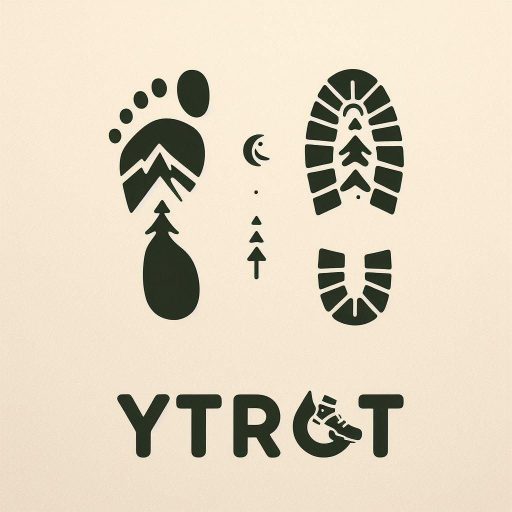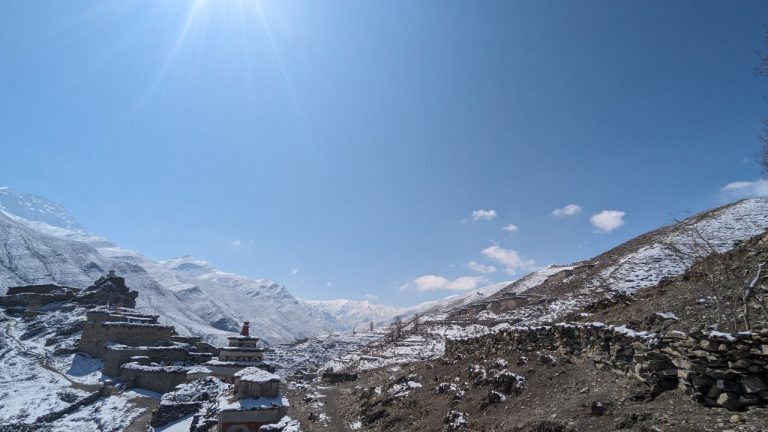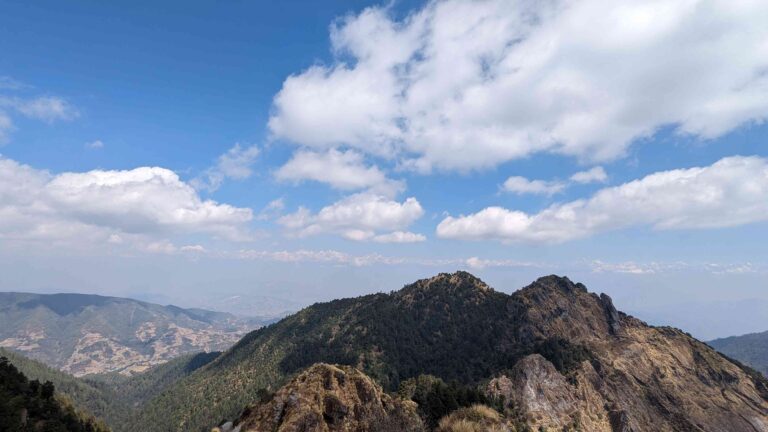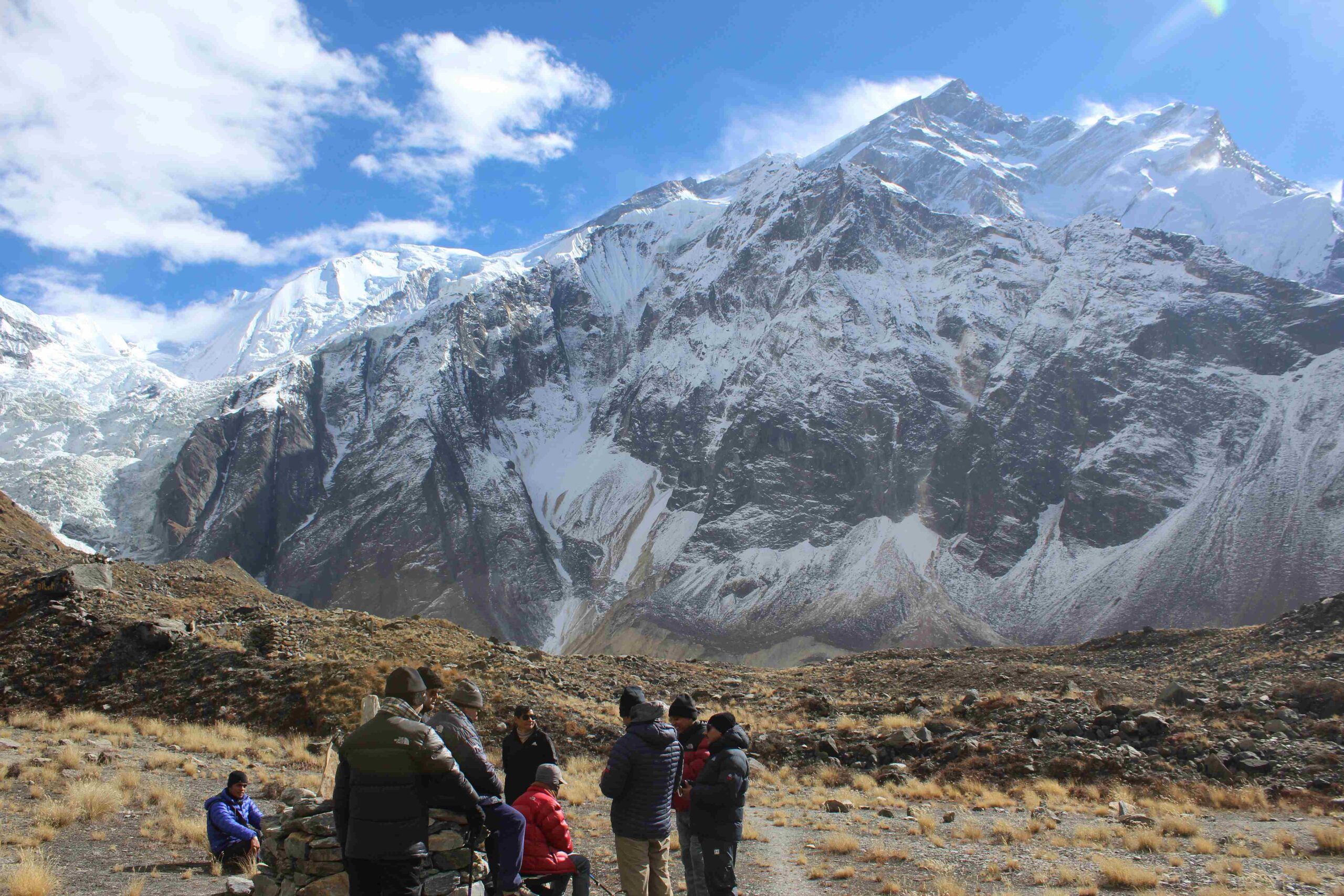A Tentative World Heritage Site is a site that each State Party wants to take into consideration for nomination. Member states may have a list of tentative sites that they may consider for nomination. Only sites that have previously been included on the tentative list are eligible for nomination to the World Heritage List.
The majority of visitors tour many of the nation’s well-known UNESCO World Heritage Sites. But, they’re not the only worthwhile heritage sites in the country. The Tentative sites mean that even though they aren’t currently World Heritage Sites, they could become such in the future. Nepal had 15 sites on its tentative list as of 2019.
Jomsom and Muktinath Valley
Jomsom is a rugged but gorgeous terrain located in Pokhara’s northern region. The varied geography and culture found here provide fascinating insight into the way of life of Nepali people from the Tibetan origin. Muktinath, a well-known Hindu and Buddhist pilgrimage destination, is not far from Jomsom. Muktinath is a holy site of salvation to Hindus. They think that bathing in these waters ensures their eternal salvation. According to Hindu mythology, Brahma started the eternal fires at Muktinath. To Buddhists, Muktinath is a place where the great sage Guru Rinpoche (Padmasambhava) who brought Buddhism to Tibet, came to meditate. Hence, it is one of the religious centres of two major religions in the world.
Similarly, there are some strange caves in the valley between Muktinath. They are located below the Thorong La Pass and Kagbeni. These caves served as ascetics’ meditation caves in the ancient times. They are important historically and archaeologically and need preservation.
Gorkha Palace
The history of the present-day Nepal lies in the ancient complex of Gorkha. We can call it the fulcrum of what Nepal is today. It has a long history of being the home of brave warriors and the birthplace of King Prithvi Narayan Shah, the unifier of Nepal. Additionally, this hill is home to the Gorkha Palace, where the Shah rulers began their 239-year reign. Built in the 16th century, Gorkha Palace is a significant historical site. The Gorkha bazaar in the city’s heart is roughly an hour’s walk from this palace. Gorkha Durbar was also the birthplace of the Gurkhas, Nepalese soldiers who were recruited by the British military.
The Gorkha Darbar and Historical Forts, which are located in the Gorkha bazar, are among the most well-liked attractions. Gorkha is also a home to 14 mountain peaks that rise above 7000 meters. This includes the eighth-tallest peak in the world, Mt. Manaslu (8163 meters). Aside from Manaslu Peak Climbing, other well-liked destinations are Manaslu Conservation Area, Manakamana Temple, Padmasambhava’s Beyul Kyimolung, Milarepa’s Caves, Ancient Monasteries Gorakhnath Cave, and Siddhi Cave.
Kirtipur
Kirtipur, a historic Newar village, is a small hill town that lies on a ridge eight kilometres southeast of Kathmandu. The ancient townhas paved lanes lined with distinctive red-brick homes and tiled roofs as well as temple squares. Kirtipur has protected the ancient charm of Newari culture and tradition as well as the art and architecture. Apart from its architecture, Kirtipur is a vibrant city that welcomes guests to a variety of cultural gatherings called Jatras (street festivals. Indrayani Jatra, held in November and December, and Bagh Bhairab Jatra,in August, are the two of the most famous.
Panauti Complex
The Panauti architectural complex lies in a picturesque location at the holy confluence of the Roshi river and Punyamati river. The main Indresvar Mahadev, traditional Nepalese architecture, dates back to A.D. 1294. Other buildings include the Brahmayani Temple from the 17th century. As well as other temples in the area are patis, sattals, inscriptions, sculptures, and conventional homes.
Tilaurakot
Tilaurakot is a village in the Kapilvastu Municipality of the Lumbini Province of southern Nepal’s Kapilvastu District. It’s possible that Tilaurakot is the location of Kapilavastu, an ancient Shakyan city where Gautama Buddha spent the first 29 years of his life. Archaeological excavation is still going on as of now at Tilaurakot. And some believe that it is the ancient palace of King Suddhodhana, father of Buddha.
Khokana
Khokana is a distinctive village that serves as a good example of a medieval settlement design. It reflects the advancement of the past with chowks and a drainage system. A Mother Godess temple and chaityas are located there. The village’s living legacy is the mustard-oil seed industry. This makes it one of the tentative world heritage sites in Nepal.
Lo-Manthang
The old Kingdom of Lo’s capital, Lo Manthang, was built in the 15th century on a plateau 3800 meters above sea level. The village sits along an antiquated trade route that follows the Kali Gandaki River as it flows through the Himalayas. A 6-meter-high earthen wall with square towers, or dzong, on its corners encloses the village. There is a small community of earthen buildings inside the walls.
The palace and monasteries of Jampa Lakhang and Thupchen Lakhang from the 15th century, as well as the monastery of Choede Lakhang from the 18th century, are the principal monuments inside the walls. The village has rows and rows of chhortens and mane walls.
Vajrayogini and Sankhu
On the old trade route to Tibet, in the northeastern corner of the Kathmandu Valley, is Sankhu, a village from the Lichchhavi period (second to ninth centuries AD). The original Newari settlement still exhibits elements of the Middle Ages, like its winding alleyways, public squares, and scattered tier-style temples and rest homes.
The Vajrayogini temple complex, built in the middle of the 17th century, lies 1.5 km north of Sankhu on the hillsides. There are numerous monuments and freestanding statues all around the main, multi-tiered temple that is devoted to the tantric deity Vajrayogini. It is thus in the tentative world heritage sites in Nepal.
Rishikesh Complex, Ruru Kshetra
The Ruru Complex features a variety of architectural styles, including statues from the Sen Period and a typical medieval temple complex (15th to 18th Century). Due to its close connection to the Rishikesh Complex, the neighboring village of Ridi has managed to preserve most of its medieval character and architecture. With regular fairs and festivals, historic devotional traditions relating to the dissemination of Vedic rituals and culture, and the practice of Bhaktini Amas (Female Mendicants), Rishikesh of Ruru Kshetra still maintains its living heritage.
Nuwakot Palace
Nuwakot Palace Complex of the 18th Century lies on the ancient trade route from the Kathmandu Valley to Tibet. The palace was built in the Malla style of architecture with the fort-like characteristics. The Complex comprises of the main Nuwakot Palace and various temples and shrines, the most prominent being the Bhairab Temple.
Sinja Valley
Sinja Valley lies in Mugu district of Karnali province. Archaeological relics from the capital city of the powerful and well-organized Western Malla or Khasa Kingdom in the 12th and 14th centuries can be found in Sinja Valley. The Khasa Kingdom broke up into the Baise or Twenty-Two Kingdoms around the 14th century. And these kingdoms persisted until the late 18th-century unification of Nepal. There are ruins of old palaces, temples (Kanak Sundari, Tripura Sundari), and the old settlement. The remains of an old settlement with a Malla doorway and steps were surrounded by a spectacular ring of enormous monolithic stone columns. An sophisticated water supply system’s earthen pipes were discovered during the excavation. There are caverns with historical Buddhist votive chaityas and cliff inscriptions across from the Hima River.
Tansen, Palpa
Tansen is the district capital of Palpa. It is a typical Western Nepalese traditional town at a height of 1372 meters on the Shreenagar hill. Tansen’s history dates back to the 11th century AD. The area was a part of the twelve regions known as Bara Magarat that were governed by the Magar kings. The town grew as a marketplace for the Newari craftsmen and dealers, who were well-known for their metal and dhaka (textile) industries. Tansen is evidence of the Newari people’s architectural style and living heritage.
Janaki Temple
Ram Janaki temple in Janakpur is the birthplace of Goddess Sita, the consort of Lord Rama. The territory belonged to King Janak’s kingdoms, as it is stated in the famous epic of the Ramayana. One of the holiest locations for Hindus is the Ram Janaki Temple. Numerous artifacts from the 11th and 12th centuries AD have been discovered. The temple’s architecture is distinctive because it combines classical and neo-classical design with fortification features in a distinctive natural context.
Hindus from Nepal and India visit this place of worship, and Indian visitors make up the majority of the local population in the town center. The stunning Ram Janaki Temple is a unique instance of Hindu-Koiri architecture in Nepal that appears to be at home in Rajasthan.
Bhurti Temple, Dailekh
A group of 22 monuments make up the Bhurti temple complex in the Dailekh District of western Nepal. It is unknown precisely when and by whom this temple complex was founded and built. The temples have conventional Western Malla architectural style. The monuments use dry stone masonry in the Panchadeval style, which is a variation common throughout the entire Khasa Kingdom. The temples’ design, construction, and craftsmanship are particular to the area. These temples don’t currently host any religious services. The temples are quite away from the adjacent township and are still in their original condition.
Ramagrama
Ramagrama is a Lord Buddha relic stupa. The Ramagrama Stupa, one of the eight original locations where the relics of Buddha were enshrined, is a very important Buddhist site even though it merely appears to be a modest, 7-meter high hill today. On the banks of the Jharahi River, it lies near Lumbini. Numerous historical eras’ worth of pottery, beads, bangles, and artifacts have been uncovered during archaeological digs.




💯🙌🏻🙌🏻